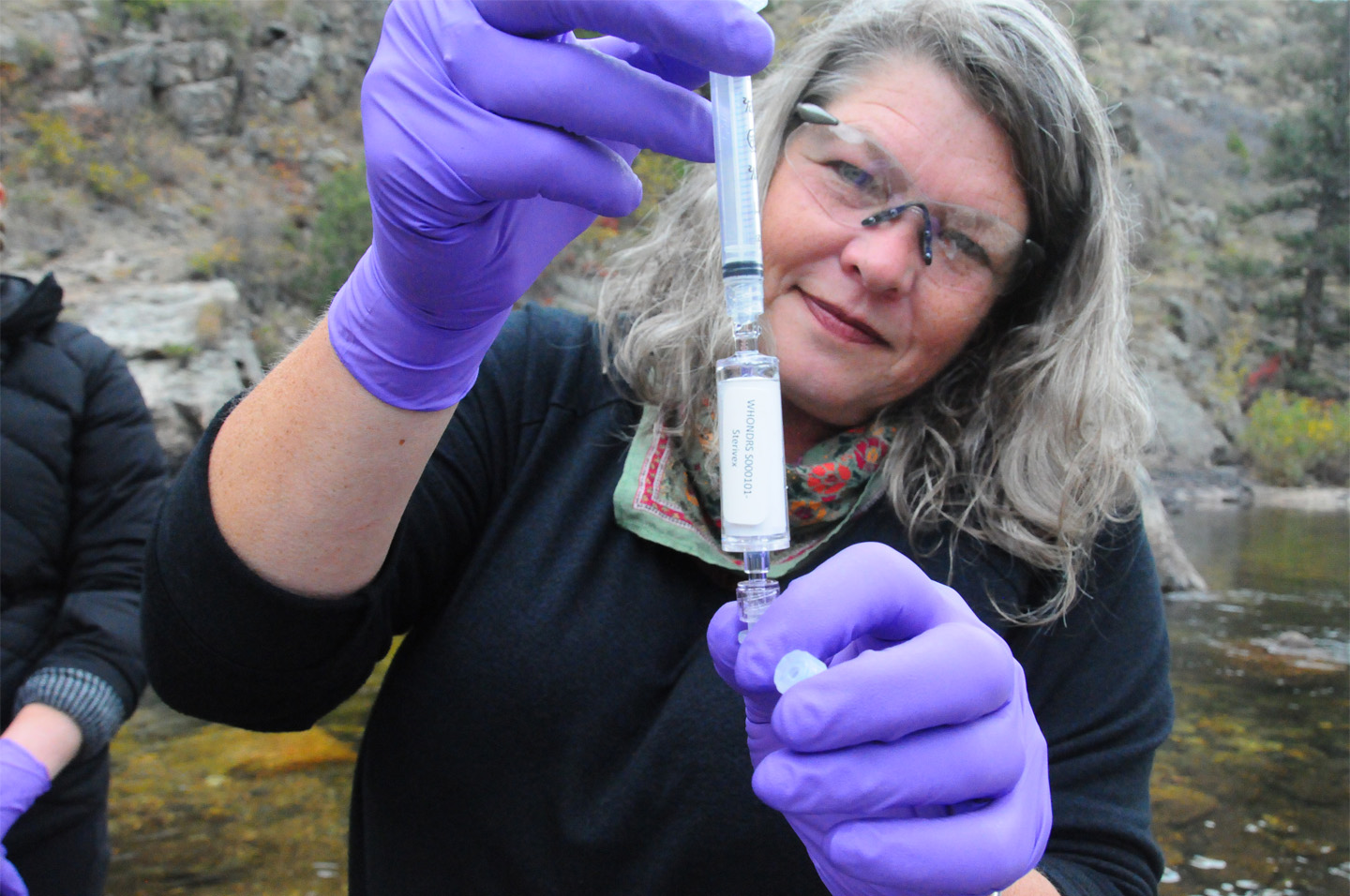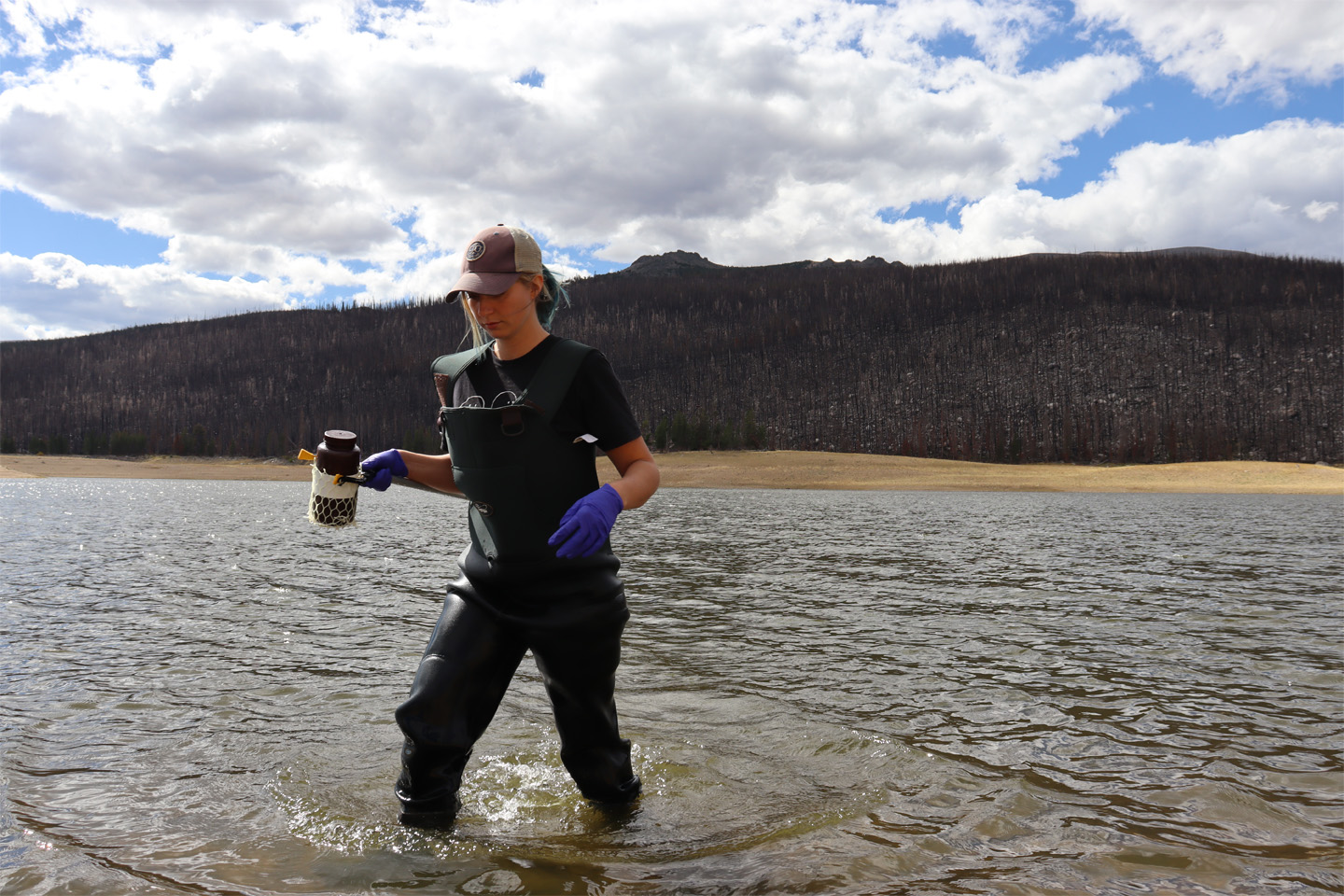Adapted from a news release by Colorado State University.
Rivers and streams serve as critical connectors across vast geographical landscapes, trickling out of tucked-away headwaters and snaking thousands of miles toward oceans and deep seas. These waterways directly impact human and environmental health, agriculture and energy production, and supply the United States with two-thirds of its drinking water. And yet, compared with other larger water bodies, the microbiology of rivers is relatively understudied.
A Colorado State University-led team of scientists including researchers from Lawrence Berkeley National Laboratory (Berkeley Lab) have contributed to changing that - detailing for the first time both broad and specific information about the presence and function of microorganisms in rivers covering 90% of the watersheds in the continental U.S. Cataloging the microbiome of these rivers is the result of a yearslong participatory science effort published this week in the journal Nature.
Berkeley Lab expertise and capabilities enabled this research by bringing genomic sequencing tools and expertise along with making the data widely accessible through public databases. "A project of this scale really demonstrates the power of open, distributed science to address big questions about how microbes impact ecosystem processes," said Emiley Eloe-Fadrosh, head of the Metagenome Program at the U.S. Department of Energy (DOE) Joint Genome Institute (JGI), a DOE Office of Science user facility located at Berkeley Lab, and lead PI of the National Microbiome Data Collaborative (NMDC).
"A project of this scale really demonstrates the power of open, distributed science to address big questions about how microbes impact ecosystem processes."
- Emiley Eloe-Fadrosh
This new research suggests that microbes play a significant role in shaping the overall health of rivers. The paper's authors describe river microbes as "master orchestrators of nutrient and energy flows that will likely dictate water quality under current and future water scenarios." What's more, the authors found these microbes are interacting with contaminants found in the water, adding new detail to an existing body of evidence showing that rivers are impacted by artificial inputs such as antibiotics, disinfection products, fluorinated compounds, fertilizers, and microplastics. Notably, river microbes had the ability to degrade microplastics into smaller carbon compounds, and microbes found near wastewater treatment plants expressed high levels of antibiotic resistance genes.
The study also found that river microbe behavior supports a decades-old idea known as the River Continuum Concept - a macro-ecological theory that views rivers as one continuously integrated system. For example, a particular type of fish thriving at a particular spot in a river is inextricably linked to what's happening upstream. Turns out, this is also true of river microorganisms.
"People used to think of rivers almost just as pipes, a way to move water from one place to another," said CSU Research Professor Mikayla Borton, lead author on the Nature paper. "But rivers are much more than that - they're performing all kinds of activities. And there's a pattern to it; those activities can be predicted. Now, we know what microbes are performing some of those activities."
The study involved cataloging more than 2,000 microbial genomes from about 100 rivers across North America - a majority from water samples collected by local community members through a sampling program run by the Pacific Northwest National Laboratory, or PNNL, an environmental and physical sciences research lab located in Washington state and operated by Battelle, a private nonprofit, on behalf of the U.S. Department of Energy.
"When we look at how the land around a river is managed, we can see the processing of certain kinds of anthropogenic contaminants or chemicals through the microbes in their DNA," said Kelly Wrighton, a professor in CSU's College of Agricultural Sciences and a senior author on the paper. "There's a very strong relationship - it suggests there's a signal in the microbiome of how we're living on and managing the land that is perpetuated into the river system and then downstream."
Microbiome science is an emerging scientific field. One of the key promises of this research area is that microbes can function as a kind of canary in the coal mine for the health of both humans and critical ecosystems - soils, oceans, or, say, the overall wellness of a river. "Our hope," said Wrighton, one of the leaders of CSU's Microbiome Network, an interdisciplinary research group, "is that this information can eventually be used to develop new diagnostics that are indicators of a healthy river versus an unhealthy river."

Participatory science on a large scale
In addition to unlocking new insight into river microorganisms, the research published this week also showcases how participatory science can be successfully executed on a large scale, Wrighton said.
Wrighton first considered the project in 2018, while attending a national DOE research meeting in Washington, D.C. At the meeting, Wrighton met James Stegen, a PNNL earth scientist, and learned that Stegen and his colleague, Amy Goldman, were already overseeing a massive, worldwide river sampling effort known as the Worldwide Hydrobiogeochemistry Observation Network for Dynamic River Systems (WHONDRS). The program enlisted both scientists and non-scientists to collect river samples locally and send the samples to PNNL for analysis. Wrighton realized those same samples could also be analyzed for microbial data.
Decoding the river
Enabled by the JGI's Community Science Program, Wrighton and her team set out to study river microbiomes. They sent the river water samples to the JGI for genomic sequencing that revealed specific clues about the river water samples. The JGI sequenced over 1,000 metagenomes, which provided insight into the varying communities of microbes across the samples. Researchers also contributed to generating metatranscriptomic information, which revealed gene expression of microbes.
Throughout their sequencing efforts, the JGI established standardized sequencing protocols, which means that researchers could compare results across the varying sampling locations. The JGI's expertise and resources were also crucial for assembling and sorting the vast amount of data into individual microbial genomes or "bins". The bins from the automated pipeline, alongside additional binning approaches from the Wrighton Lab, were used to produce GROWdb, the Genome Resolved Open Watershed database.
These datasets were made available on multiple platforms hosted at Berkeley Lab. The NMDC data portal provides access to the GROW project as part of a larger microbiome data integration hub. Researchers added to the JGI analysis by linking the metagenomic and metatranscriptomic data to other relevant datasets, which ultimately provide a more comprehensive analysis of river microbial activity.
The published river microbiome datasets are also available through the DOE Systems Biology Knowledgebase (KBase). KBase enables researchers and students to immediately copy and use data from the GROWdb for comparative analyses with their own data on the KBase platform. This saves time, with no need to download and format data or load analysis packages and resources as KBase provides all the computing power. Meanwhile, the dataset for the worldwide river sampling effort, WHONDRS, is hosted on DOE's environmental systems science data repository, ESS-DIVE.
"GROWdb and the collaborative team behind the effort, along with infrastructure at the JGI, NMDC, ESS-DIVE, and KBase, is a stellar model for the future of microbiome research, with data integration and sharing as the foundation," said Eloe-Fadrosh.

In addition to being impacted by land use, river microbes were affected by other variables such as the size of the river, how much light hit the water surface, air temperature, and the speed of the water flowing in the river. Those same factors also impact larger river species. What's more, these factors were predictive of what microbes the researchers found, regardless of where in the U.S. the river was located. In fact, the team found six microbes in particular that were present and active in each of the roughly 100 rivers they studied. All six of those core microorganisms used light as an energy source.
"Microbes are active in these systems in such a way that is predictable across the continental U.S.," Borton said. "I thought that we would find similar organisms in these different river systems, but I didn't think the microbes would follow the tenets of these old river concepts for macro-organisms. That's very cool, and I think says a lot about the robustness of the science that was done prior to our work."
Borton hopes non-microbiome scientists will start using the data infrastructure they've built around river microbiomes, including incorporating microbial processes into efforts to better model ecosystems on a large scale. "We need to be better at studying across landscapes," Borton said, "and better understanding rivers can help us do that."
This research is partly funded by the Department of Energy Office of Science.






